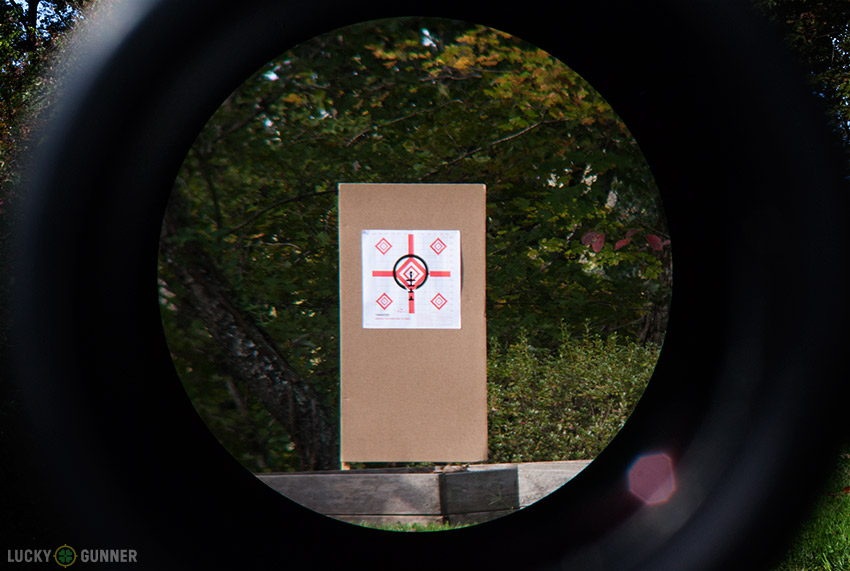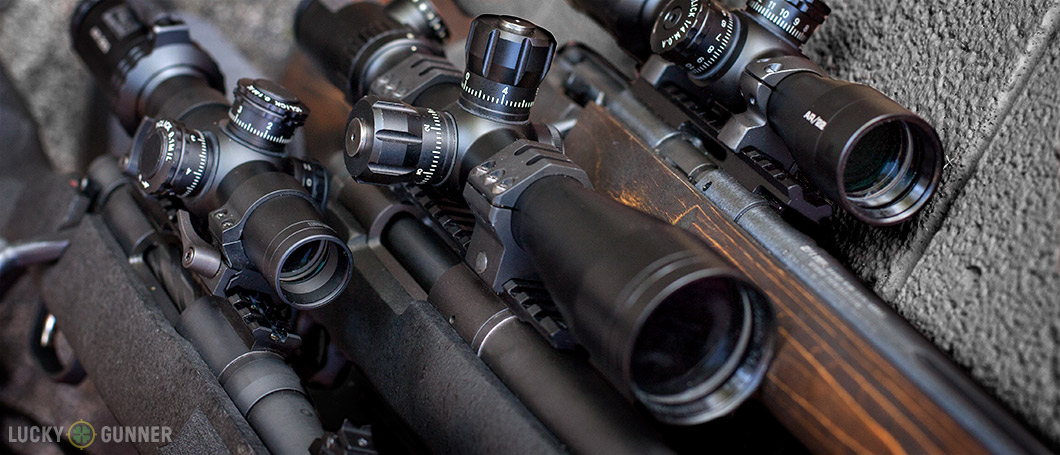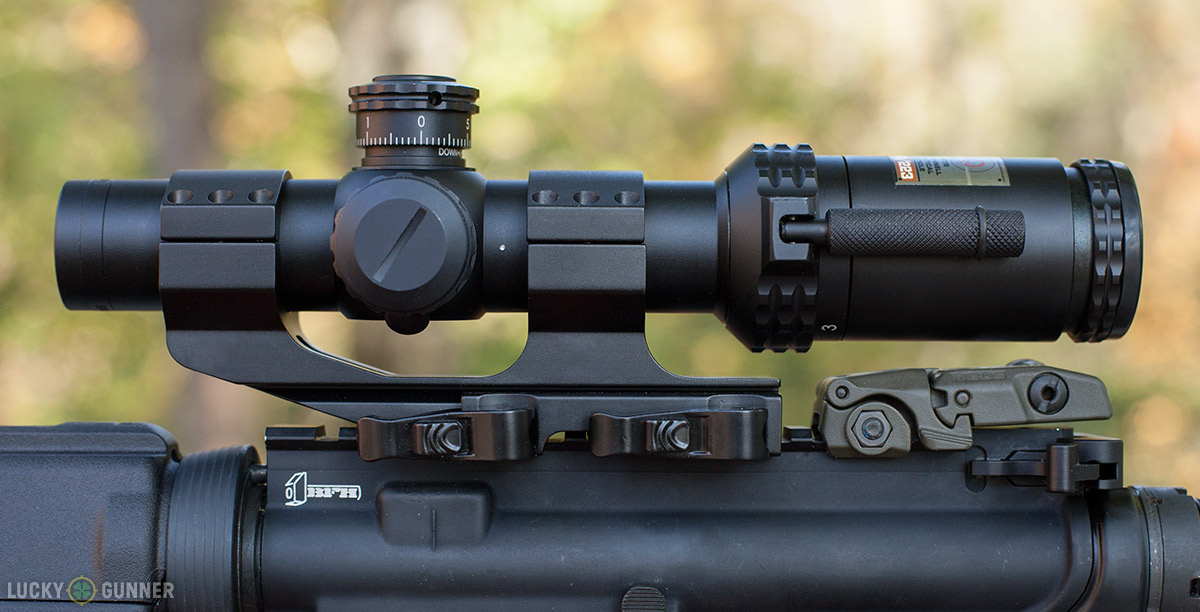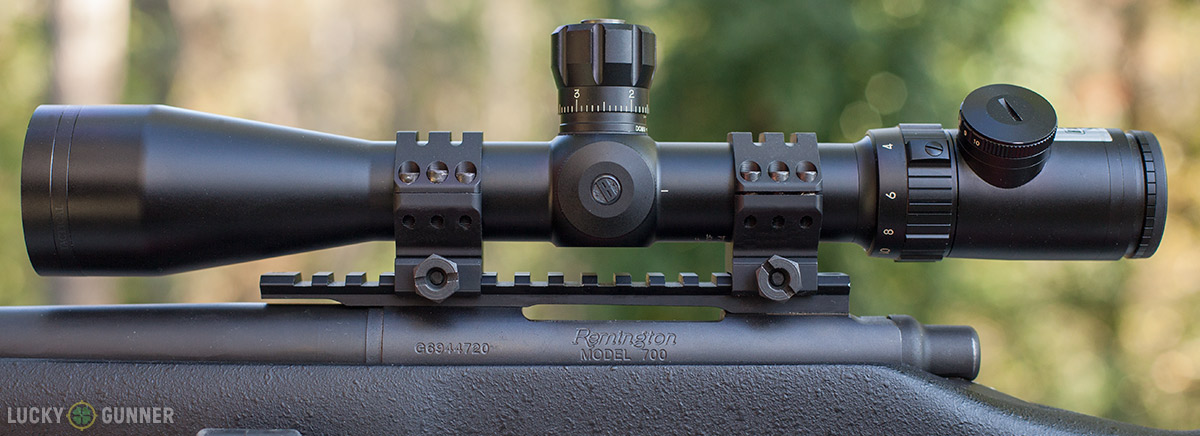One of the first optics I ever owned was a Bushnell that I mounted on a Marlin 336 .30-30 lever action. It was a low power variable scope from their budget line — probably a 1-4x. It wasn’t a great scope by any means, but it still exceeded the expectations of its sub-$100 price tag. It held zero fine, and it was small and light enough that it didn’t ruin the handiness of the Marlin. Like many lower-end optics, its limitations were mainly with poor clarity in low light, and inconsistent reticle adjustments.
I didn’t know enough about optics at the time to be sure whether the scope’s shortcomings were an inevitable result of its low cost, or a fault of the Bushnell brand across the board. So when I bought my next scope, I not only dug deeper into my wallet, I also moved away from Bushnell and looked at other company’s offerings. I’ve learned a lot about optics in general since that time, but I’ve still been prone to regard Bushnell as a “budget brand” because of that early experience. Talking to other shooters, it would seem I’m not the only one. Whether it’s fair or not, there is a somewhat common sentiment that Bushnell products are “decent for the price”, but not really worthy of consideration for the serious user. If that describes you, then you should do yourself a favor and give Bushnell a second look.
Earlier this year, I found out we were adding Bushnell optics to the Lucky Gunner catalog, so I figured I ought to check them out. Right away, I was surprised to see the broad range of products they have available. Yes, there are still the budget-level offerings, but they also have a wide array of mid-range products as well as their Elite Tactical line, some of which are priced well over $1000.
Over the past few months, I’ve had the opportunity to use a few Bushnell optics while putting together some gun reviews. Admittedly, I’m not an optics expert (or even an amateur optics snob, for that matter), but I can usually tell when a scope is doing what I need it to do and when it’s not up to the task at hand. So here’s a quick overview of my impressions along with a review after using three different Bushnell optics.
Bushnell AR 2-7x32mm Rimfire
Bushnell’s AR line are mostly low to mid-range priced optics that are targeted, as you might guess, at AR-15 owners. However, there’s no reason you can’t use them on a non AR-rifle, which is what I did for this 2-7x32mm Rimfire scope. It’s intended for use with .22 LR rimfire ARs in particular, and I used it for my review of the Ruger 50th Anniversary 10/22 rifle.
It’s priced at only $155, so it’s still very much in the “budget optic” territory, but it’s got a lot to offer. For starters, unlike my old inexpensive Bushnell scope, it’s clarity and click adjustments were not bad at all. I also really love the 2-7x magnification range. I think it’s highly underrated, especially when you consider the comparatively low number of available 2-7x optics on the market versus the much more common 3-9x scopes. I find the lower magnification of the 2-7x comes in handy a lot more often than I miss the extra magnification on the high end of the 3-9x. Not to mention the fact that most 3-9x scopes are bigger and heavier than 2-7x. For some centerfire scopes, you really do need the extra magnification of a high powered scope, but with the exception of a competition or dedicated bench rest rifle, 2-7x is just about perfect for a 22.
The AR 2-7×32 from Bushnell also features their BDC reticle. I’m not always really fond of reticles with extra “stuff” on them, but a BDC on a 22 actually makes sense. There can be a big change in zero with a .22 LR between 10 yards and 100 yards, and a reference point on your crosshairs can be a big help. Same with the parallax adjustment knob on this scope (the one with the big Bushnell “B” on it in the photo above). It’s a feature I could live without most of the time, but it’s not uncommon to shoot at fairly close ranges with a 22, and that’s often where parallax error can have a real effect on your accuracy. The adjustment knob is marked for ranges as close as 10 yards, and I found it to have almost no parallax error at that distance.
This scope was a pretty good fit for the Ruger 10/22. It’s not an extremely accurate rifle, and the Bushnell 2-7×32 allowed it to do all it’s capable of doing. It also worked well with my Savage Mk II bolt action, although that rifle is accurate enough that it would be nice to have slightly more magnification to wring all the precision out of it. At 19.6 oz, the scope adds a bit more weight to the rifle than some might prefer for a plinking gun. However, if you’re looking for a general purpose rimfire scope with a BDC reticle and parallax adjustment, I don’t think you’ll find a better value than this one.
Bushnell AR 1-4x24mm Throw Down PCL with Illuminated Reticle
This 1-4x24mm optic is also part of Bushnell’s AR line, but it’s definitely more of a mid-range offering than a budget optic. The first thing you might notice is the “thingy” attached to the magnification ring. That’s a throw lever, which have been recently popularized by 3-gun competition. The lever flips up so you can quickly turn the magnification ring on the fly, which is often a valuable feature to have in a 3-gun match, but also useful for many other applications. Until recently, throw levers were a feature rarely found on any scope under $1000, so it’s nice to see Bushnell offering this on an optic that’s priced within the reach of “Average Joe AR-shooter”.
I had this optic mounted to the Mossberg MVP Patrol for the “Battle of the Mini-Scouts” review we posted last week. It’s probably not the first optic you’d think of to use on a bolt gun, but if you imagine the MVP Patrol as a pseudo-scout rifle, then it’s not a bad combination. The reticle is designed for speed over precision. It’s got a large donut ring around inverted “T” marks for bullet drop compensation. The ring allows for quick sight acquisition, especially in low light with the bright red illuminated reticle switched on. Shooting groups from the bench, however, the lack of actual crosshairs is a slight impediment to precise and repeatable point of aim.

Surprisingly, the AR 1-4x24mm is a first focal plane design, a feature usually associated with higher magnification scopes. This means that the size of the reticle changes in proportion to the magnification. So at 1x, the reticle is small. Zoomed into 4x, the reticle is larger and takes up more of the field of view. At 1x, the reticle was smaller than I’d like. With the illumination switched on in low light, the reticle was bright enough to use like a standard red dot sight at 1x, but in bright daylight, the Bushnell’s illumination was a little washed out. The 1x setting is also not quite a true 1x, which means it has some slight visual distortion at extreme close range when compared to a true non-magnified optic. However, it would be silly to expect Aimpoint performance out of a variable power scope at this price point, and I still think the Bushnell AR 1-4×24 is a great companion for AR users. I’ll stick with my Aimpoint for a home defense rifle, but I wouldn’t hesitate to throw the Bushnell on a competition or hunting rig.
Bushnell Elite Tactical LRS 3-12x44mm with Illuminated Mil-Dot Reticle
Bushnell’s Elite Tactical line has recently earned some respect among precision rifle aficionados, so I was glad to get the chance to try out their 3-12x44mm LRS scope. Like the AR 1-4x24mm, it’s a first focal plane design. It also has an illuminated mil-dot reticle and parallax adjustment.
I’ve had this one mounted on the Remington 700 .308 Win that I’ve been tinkering with on and off this year. Unfortunately, I haven’t had the opportunity to shoot either the rifle or the scope at any ranges past 200 yards yet, so I don’t know the full capability of either one. What I can say is that so far, the Bushnell Elite Tactical has been dependable, with a crystal clear image under a variety of lighting conditions. Once I had the scope zeroed in, I actually didn’t think about it much, which is what happens when a tool just works.
One aspect worth noting is that the illuminated reticle on this optic is green instead of the usual red. I honestly can’t say if I prefer one over the other, but the green illumination in this particular scope appears bright and sharp. When some thick cloud cover rolled in close to dusk while I was at the range one evening this summer, the bright green mil dot was nice to have, and allowed me to keep shooting for another 30 minutes than I would have otherwise.
For the last couple of years, I’ve been really impressed by the value offered in Vortex Optics, and being a fan of compact, lightweight scopes, I often gravitate toward Leupold products for lower magnification optics. But my experience with these three Bushnell scopes has given me a new impression of Bushnell as a company with a little something for everyone, from budget minded customers to the serious competitor. If you haven’t seen what they’ve been up to lately, be sure to check out their lineup the next time you’re shopping for a new scope.




